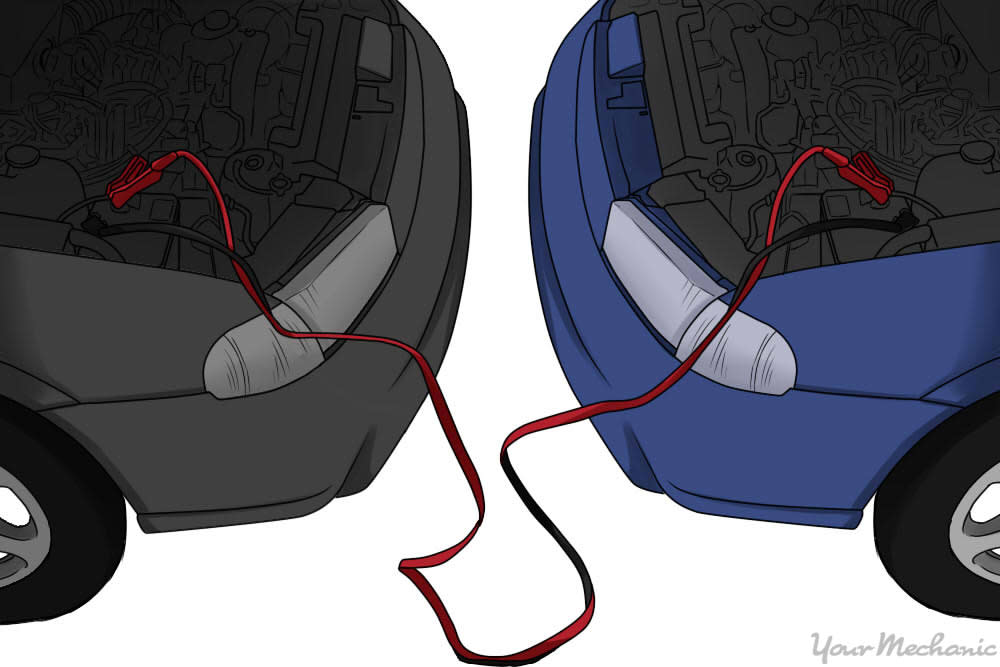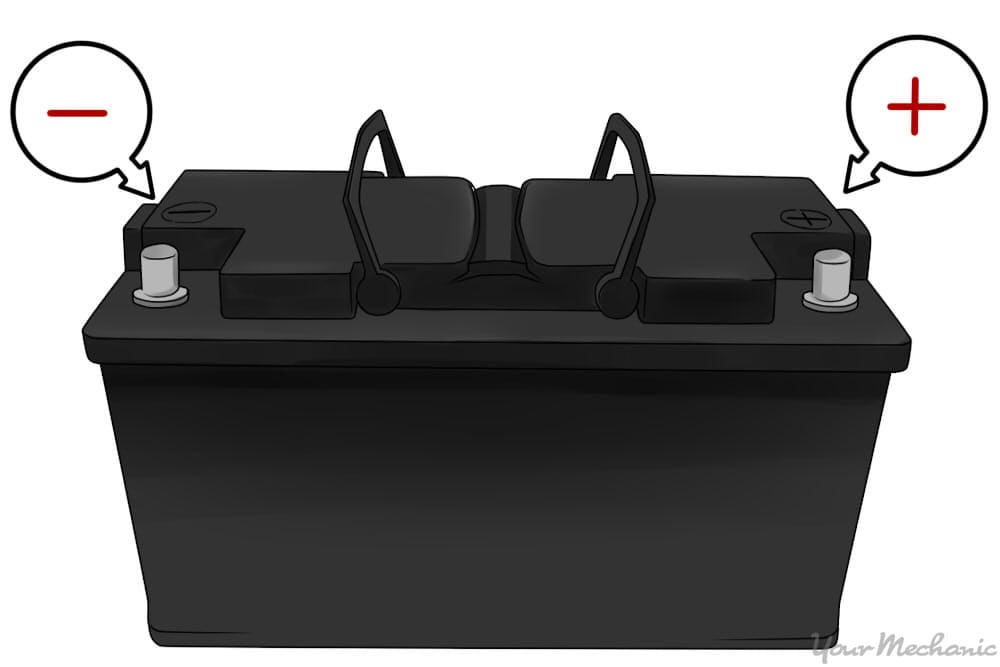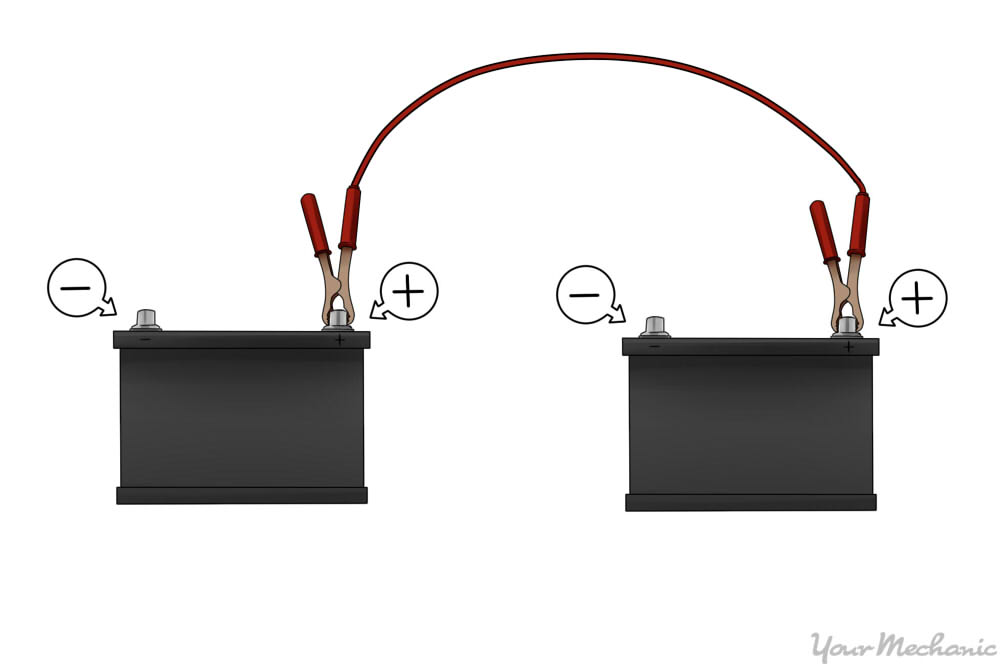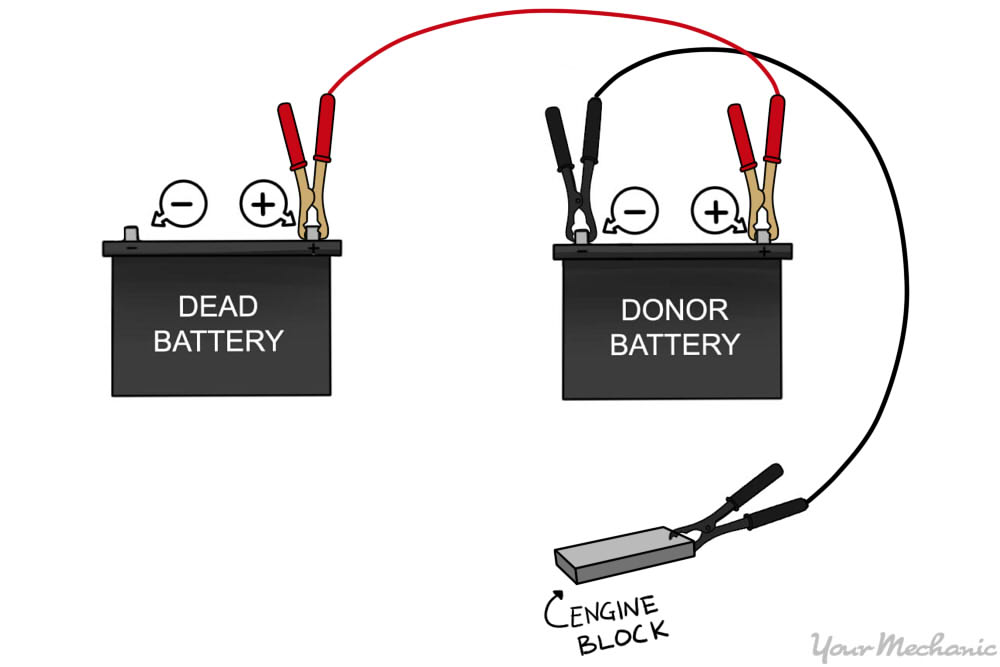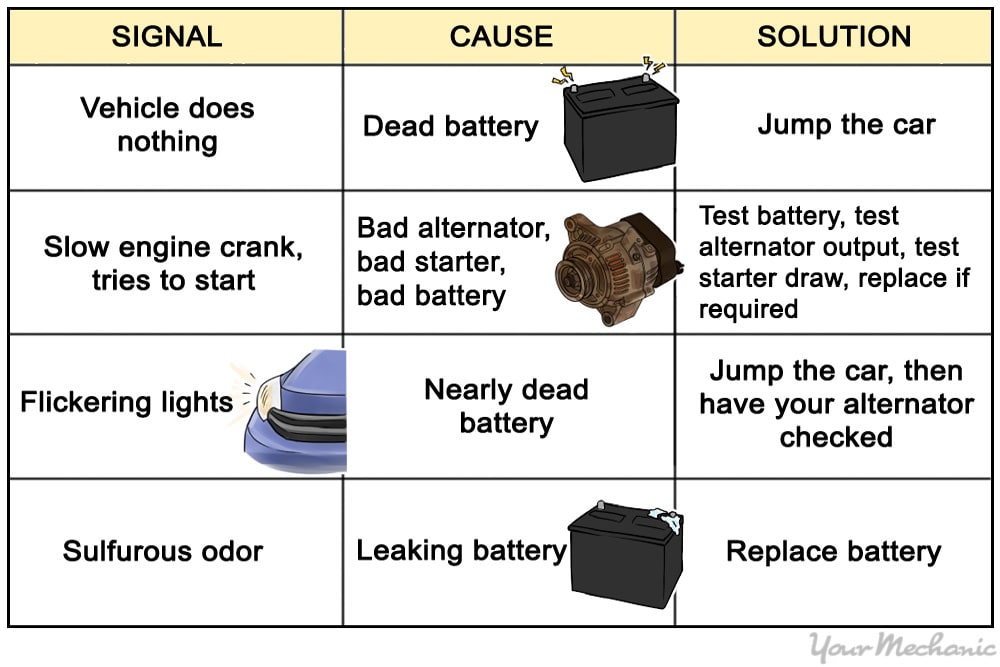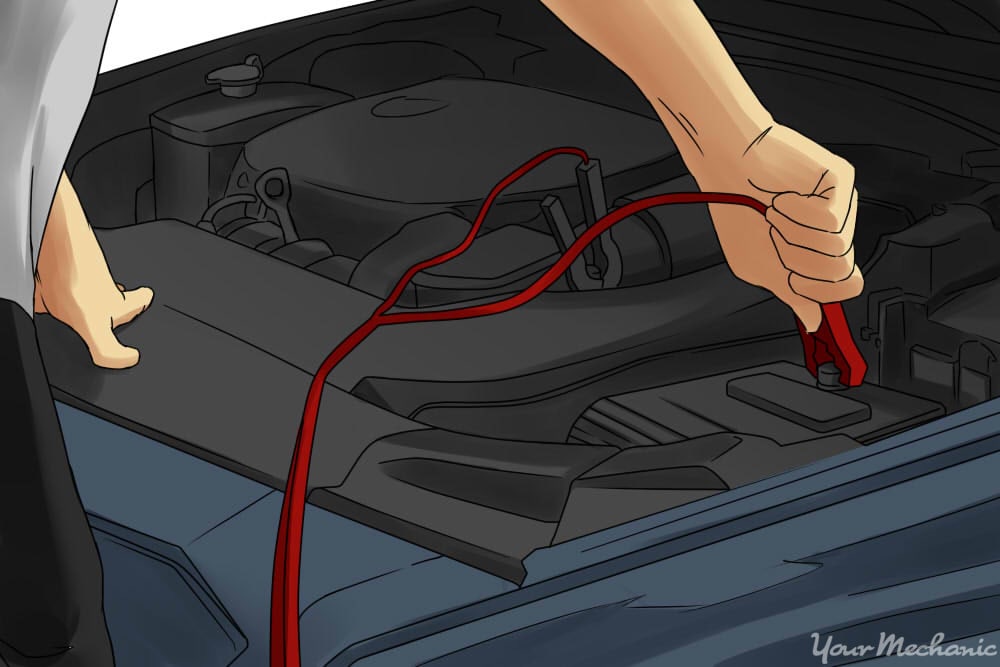

It's disheartening when you settle into the driver's seat ready to go to work or visit friends, turn the key in your ignition, and nothing happens. It is usually a sign that your battery is dead and just needs a jump.
Although this is a simple fix, it is important to hook the jumper cables up properly to get the desired result of a running vehicle without harming any of its electrical components.
To use jumper cables to recharge your car battery, follow the steps below.
How to use your jumper cables
-
Open hood of both vehicles - First you need to find where the batteries in each car are located.
Warning: Do not enlist the help of a donor car with a higher-voltage battery than yours because it could damage your vehicle's electrical systems.
Check if jumper cables reach between vehicles - Be sure that the length of your jumper cable will reach from the donor vehicle's battery to the other vehicle's dead battery. Re-park the donor vehicle for the cables to reach, if necessary.
Switch off electrical components - Turn all electrical components off, such as the radio or interior lights, in both vehicles. This ensures all of the available charge in the donor vehicle will be transferred to the dead battery without any additional demands. If, however, the donor vehicle is parked in a dangerous spot, it is advisable to leave emergency flashers on.
Prepare the vehicles. - Ensure that both vehicles are in park with the emergency brake engaged if on an incline and that the donor vehicle is off.
-
Prepare jumper cables - Separate the jumper cables where none of the clamps are in contact with each other.
-
Locate terminals - Note which battery terminal is positive and which is negative on the batteries in each vehicle. Positive terminals are usually marked with a plus sign and/or have a red plastic cover while negative terminals are marked with a minus sign and frequently have black covers. These colors correspond with the appropriate clamps on the jumper cables.
Warning: If, upon this inspection, you suspect your battery is frozen from cold temperatures, often indicated by a bulging appearance to the sides, do not attempt to jump it because it could potentially explode.
-
Attach positive terminals - Attach one of the red clamps to the positive terminal of the dead battery and the other red clamp to the positive terminal of the donor battery.
Attach negative terminal and ground - Attach the nearest black clamp to the negative terminal of the donor battery, then the other black clamp to the negative terminal of the dead battery or to an unpainted bolt on the engine block to create a ground.
Start donor car - Start the donor car, and allow it to run for a minute or two.
-
Start the jumped car.
Tip: If the car does not start after being jumped, try reconnecting the cables in the case that one of them was not securely attached and repeat the process.
Remove negative cable - Remove the negative cable on the jumped vehicle and then the donor vehicle.
-
Remove positive cable - Unclamp the positive cable on the donor vehicle and then the jumped vehicle.
Tip: Let the jumped vehicle run for at least 15 minutes before turning it off. This allows enough charge to be stored for future use in the battery.
How to determine if further action is needed
While your vehicle simply doing nothing when you turn the key is a common indication you must use jumper cables to start the engine, there are other cases when you may need to hook up these cables or otherwise pay attention to your battery. Some of these situations will require further action once the jumping process is complete, as outlined below.
Why do car batteries die?
The batteries used in vehicles are standard lead-acid varieties. They are composed of two lead plates that make contact with a mixture of sulfuric acid and water; the positive plate has a lead dioxide coating while the negative plate is made of sponge lead. The battery as a whole is capable of storing a charge but not creating it. When your vehicle operates properly, the battery produces the energy necessary to start the vehicle, and the alternator returns a charge to the battery for use the next time you turn the key in your ignition.
If that stored charge is used up before you try to start your car or truck the next time by something like forgetting to turn off your headlights or leaving the radio on, then the battery needs to get a charge from another source. Jumper cables deliver a charge from another running vehicle to your dead battery to get you back on the road again.
Hopefully, jumping your car’s battery is an isolated incident caused by something innocuous like leaving your headlights on all night. If you find yourself needing to hook up jumper cables for a jump on a regular basis, however, you may need your battery serviced.
Our mechanics are experienced in this type of service and can ensure that not only your battery is in tip-top condition but your battery cables, too. Feel free to contact YourMechanic is you need assistance or a jumpstart for your car.


